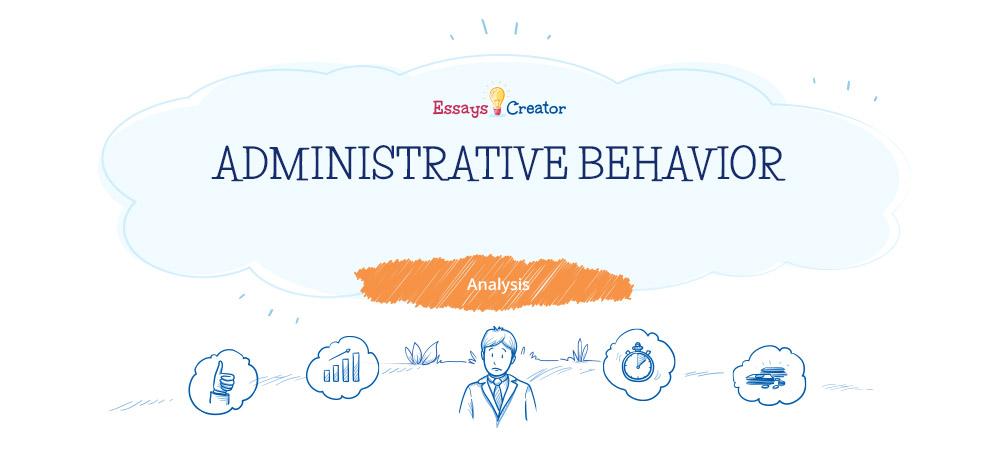
Administrative Behavior Free Essay
The public administration’s behavior is characterized by several distinctive features. The current paper will focus on the two aspects of administrative behavior within public sector organizations. Firstly, IKEA’s workforce system will be used for discussing HR management in the public sector. Secondly, the case regarding flooded farmers will assist in analyzing the conditions, which are necessary for starting the cooperation with a governmental organization. Administrative behavior is quite complicated in the public sector; hence, non-public organizations might experience some difficulties with it.
Do You Think IKEA’s New System Could Be Used in the Public Sector?
IKEA’s new system is primarily developed to increase the effectiveness of the employees that perform simple low-wage tasks and frequently work in stressful conditions. As a result, they are normally disappointed and even unhelpful. The new system aims to make the employees happy and be ready to answer the customers’ questions wherever this is necessary. For example, IKEA’s workforce-management system helps the organization to divide the employees throughout the store in such a way that they are located in the places where the customers need their assistance most of all (Davidson, 2013). Earlier, visitors could not find a worker, who was able to answer all the questions, so buying process was rather complicated and unpleasant.
Order your Analysis Essay help today!
IKEA’s new paradigm could not be applied to the public sector organizations due to their different nature. In particular, public sector organizations belong to mechanistic organizations, so they encourage the employees to demonstrate critical thinking skills and use initiative (Hummel, 2008). Therefore, IKEA’s workforce-management system does not address the needs of the public sector organizations. Proper distribution of the staff does not motivate these employees to be initiative and does not develop their critical thinking skills due to its rational nature and a significant lack of flexibility or creativity. Public health organizations require approaches that are more creative enabling their workers to have less control from the supervisors, even though still performing the low-wage tasks. They work independently on their tasks which results in a need to know many processes. It is highly possible that increasing the wages could make the workers happier, yet it does not imply they would become more initiative
IKEA’s force-managed system is appropriate for the organizations whose employees do not have to demonstrate significant skills as it helps to distribute the workers that are expected to perform simple tasks and do need to think very much. For example, IKEA’s workers have clear guidelines regarding the way of executing their tasks. As their main task is to provide the answers to customers’ questions the about product, the employees only should learn the information about IKEA’s goods.
Why did not Farmers Receive Governmental Assistance?
Tropical storm Irene encouraged farmers to become more creative. They lost their crops due to the weather conditions, so they had to deal with their debts. The farmers tried to solve their financial issues by getting governmental assistance. The government collected the information about people’s needs but it did not help them financially. The process of receiving governmental assistance was rather complicated for the farmers, and they could not find the necessary solution (Wells, 2011). To survive, they had to use the support of communities and arrange fund-raising events.
However, the farmers could get governmental support if they formed an organization and then asked for assistance. The organization responds to another organization only through a formal counterpart (Hummel, 2008). In this case, it can control all the risks. When farmers demand help as individuals, the government treats them as “drug dealers” (Wells, 2011). This is caused by the fact that the individual farmers do not have any plans in case of unexpected conditions. Moreover, their manner of operating the business often resembles a “chicken-scat bingo” (Wells, 2011). The individuals do not use any systemic approaches as regards doing business. For example, Mr. Broadley solely relied on the crops of tomatoes, and when the storm ruined his plantations, the farmer did not have enough money for settling the credit card debt. Therefore, he had to organize a fund-raising event. If the government helped him, he would not have to resort to such a creative paradigm that would be negative for both sides. On the one hand, Mr. Broadley and his colleagues would be safe and might lose an opportunity to take responsibility for their wrong management. Apart from that, they would not learn how to manage the business under hard conditions. On the other hand, the government would waste money because it is the responsibility of business owners to create plans for different situations.
The Community Supported Agriculture programs demonstrate that it is more reasonable to form the organizations than to act independently. Farmers that run these programs made many activities to distribute the risks between farming and customers which allowed them to avoid significant debts for farmers during the storm in 2011 (Wells, 2011). If all farmers formed an organization, they would receive governmental assistance. What is more, the government would have more opportunities for assessing the needs of borrowers and controlling the distribution of the assistance.
In conclusion, the public sector organizations cannot use IKEA’s system because they need employees with good critical thinking skills and who are willing to use initiative. With this respect, IKEA’s paradigm is rather rational it is based on a steady state that addresses the needs of the public sector organizations. Its main advantage is the ability to increase the job satisfaction of workers and make them helpful, which is not enough for the public sector. The case with the flooded farm revealed another feature of the public administration. The public sector organizations prefer working with organizations, not with individuals, which is why the farmers did not receive governmental assistance after the flood in 2011.

